Kids think caves are cool, and your child will love growing their own colorful stalagmites and stalactites in this simple science experiment that uses things you have on hand.
You can make this an indoor or outdoor project depending on the weather, and the crystals will take a few weeks to grow. If you take it outside, keep your cave in a covered area, so it doesn’t get rained on.
What You'll Need
- a waterproof rectangular container, like a plastic bin, large enough to hold two jars when set on its side
- aluminum foil
- 2 small jars or juice glasses
- baking soda
- food coloring
- a white paper towel
- a spoon
How to Make the Crystal Caves
Your child should be able to do most of this by themselves, so let them take the lead!
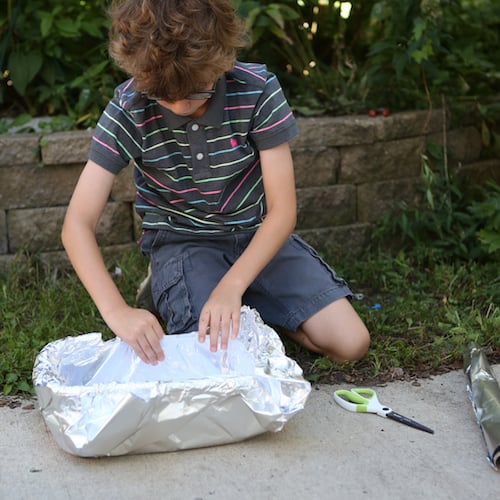
Step 1: Cover the plastic container with aluminum foil to create a cave. Turn it on its side.
Step 2: Fill jars or glasses with very hot tap water.
Step 3: Have your child add several spoonfuls of baking soda to each glass and stir. Continue to add baking soda until no more will dissolve and there is a layer of baking soda in the bottom of the jar.
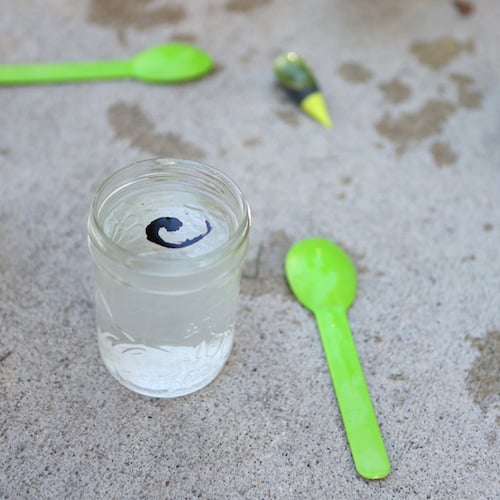
Step 4: Put a few drops of food coloring into the baking soda solution and stir. Use a different color in each jar.
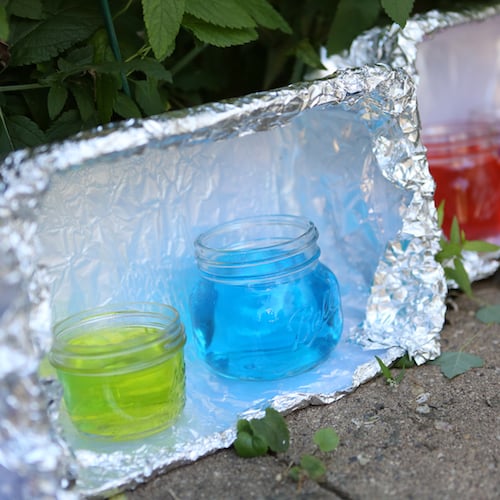
Step 5: Place the jars in your “cave.”
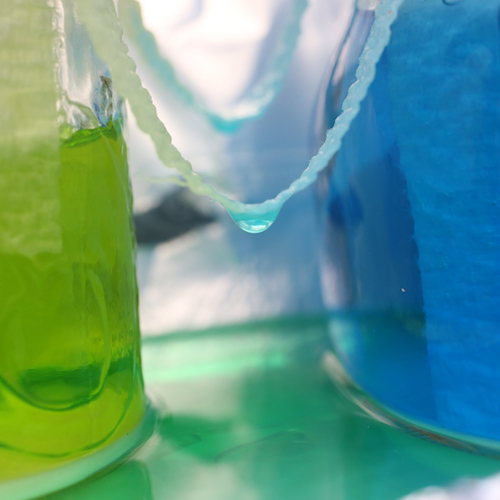
Step 6: Create a paper towel bridge between the two jars using two long strips of paper towel, about half an inch wide. Pinch the center of each strip to create a fold. Be sure that the ends of each paper towel are submerged in liquid. See photo (above) for how the paper towel should look.
Step 7: Ask your child what they think is going to happen.
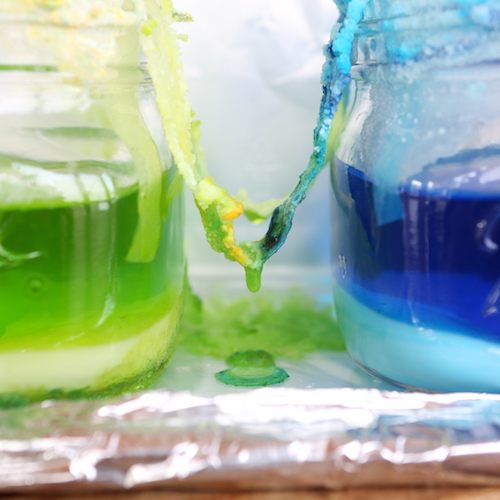
Step 8: Make sure that the liquid in the jars is moving up and into the paper bridges. It should start to drip from the center fold eventually. Check your cave every day or two to see what is happening. It’s fun to take photos to put in a homemade science notebook or draw pictures of the cave. You can also make paper bats to hang from the cave using string or thread.
Hint: If the paper towel bridge dries out, spoon some liquid from the jars onto the paper bridge resting on the jar lips to restart the dripping.
The Science Behind the Fun
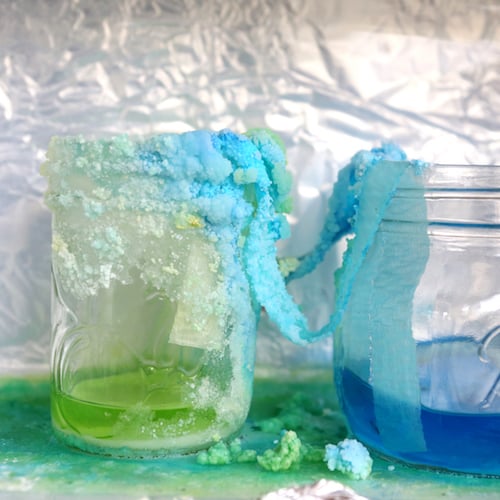
There's an old saying that stalactites hold tight to the ceiling, while stalagmites grow like a mighty tree from the ground.
This experiment is a great demonstration of what dripping water does in real caves. In nature, formations called stalactites are created by water dripping down from the roof of the cave and depositing minerals. Stalagmites, on the other hand, form on cave floors underneath dripping water, where minerals start to pile up.
While your baking soda crystal formations grow fairly quickly and are made up of tiny crystals, it can take thousands of years for crystals to form in natural caves, and some caves hold individual crystals more than 35 feet long!
You can find more experiments like this one at kitchenpantryscientist.com, and in my books Kitchen Science Lab for Kids (Quarry Books) and Outdoor Science Lab for Kids (Quarry Books).
© Quarry Books, 2016/Outdoor Science Lab for Kids
Featured Photos Credit: © Quarry Books

